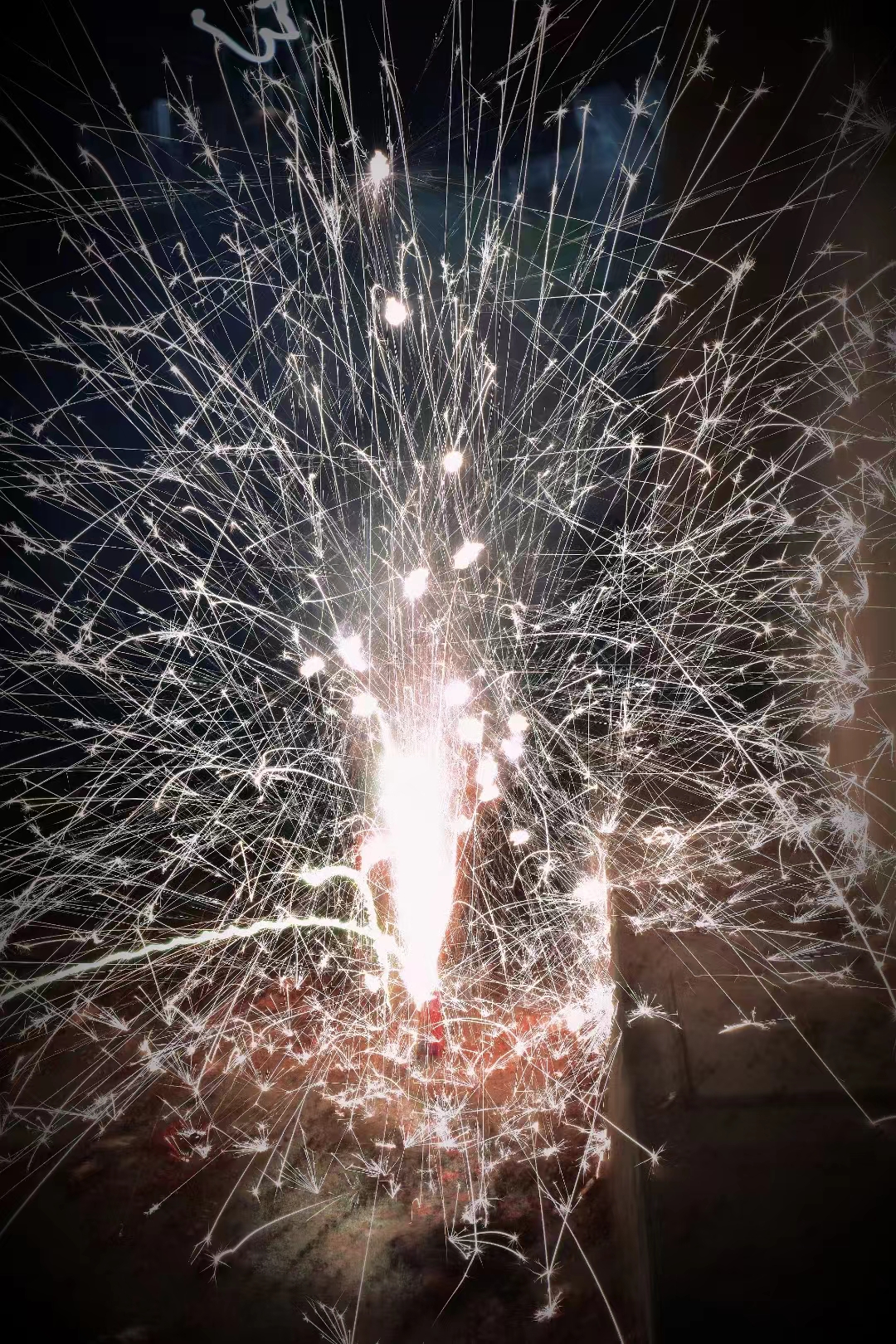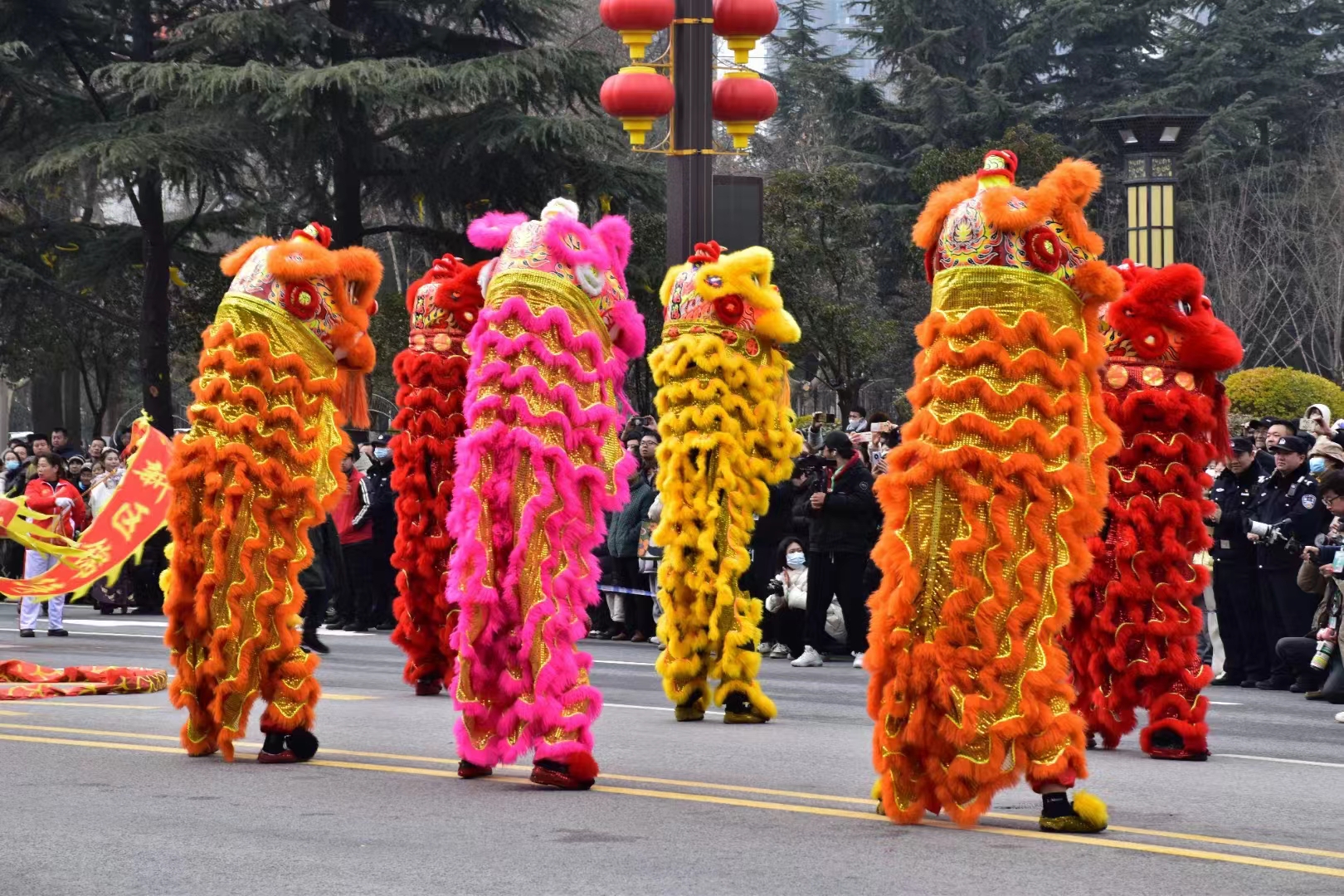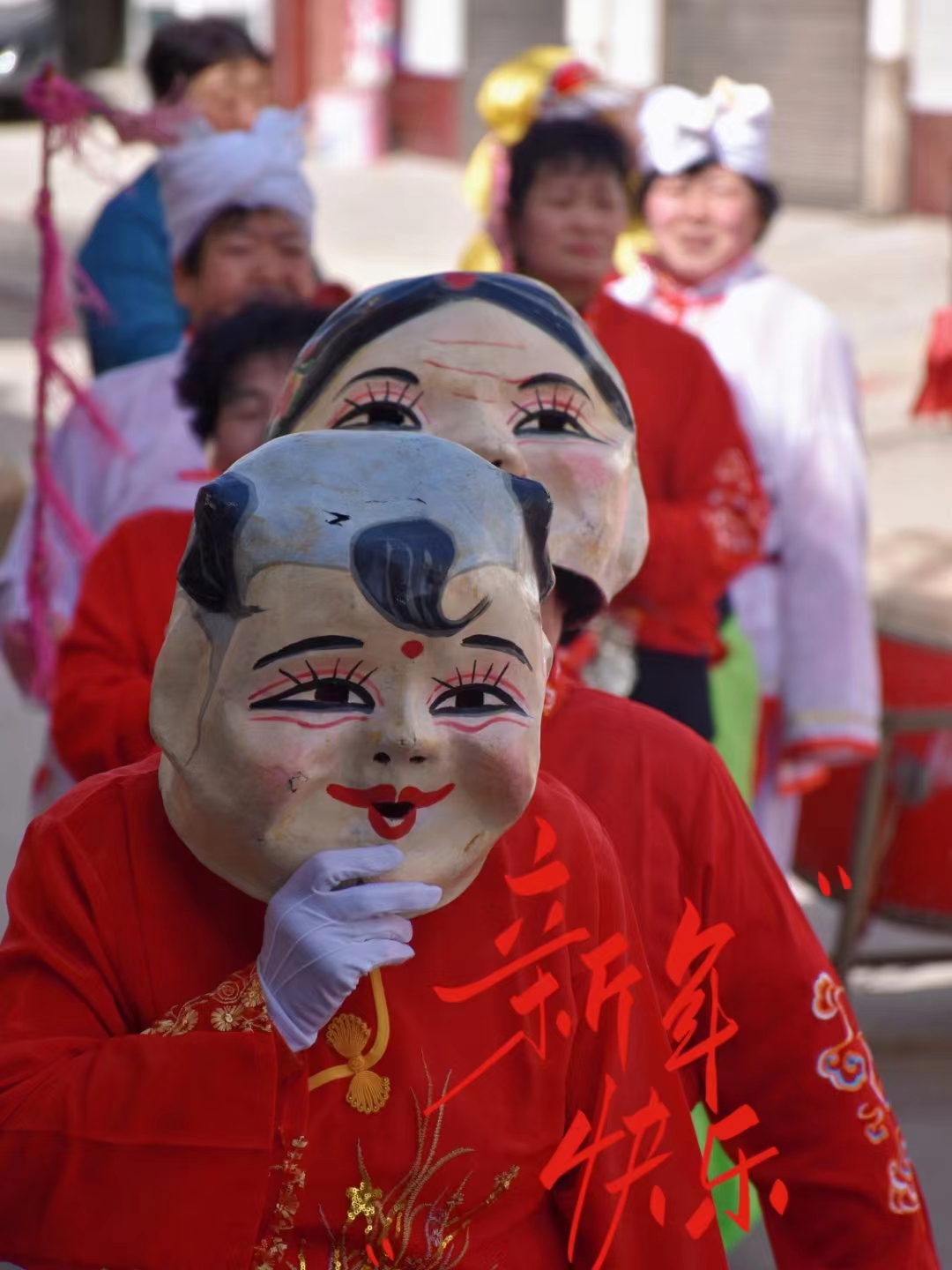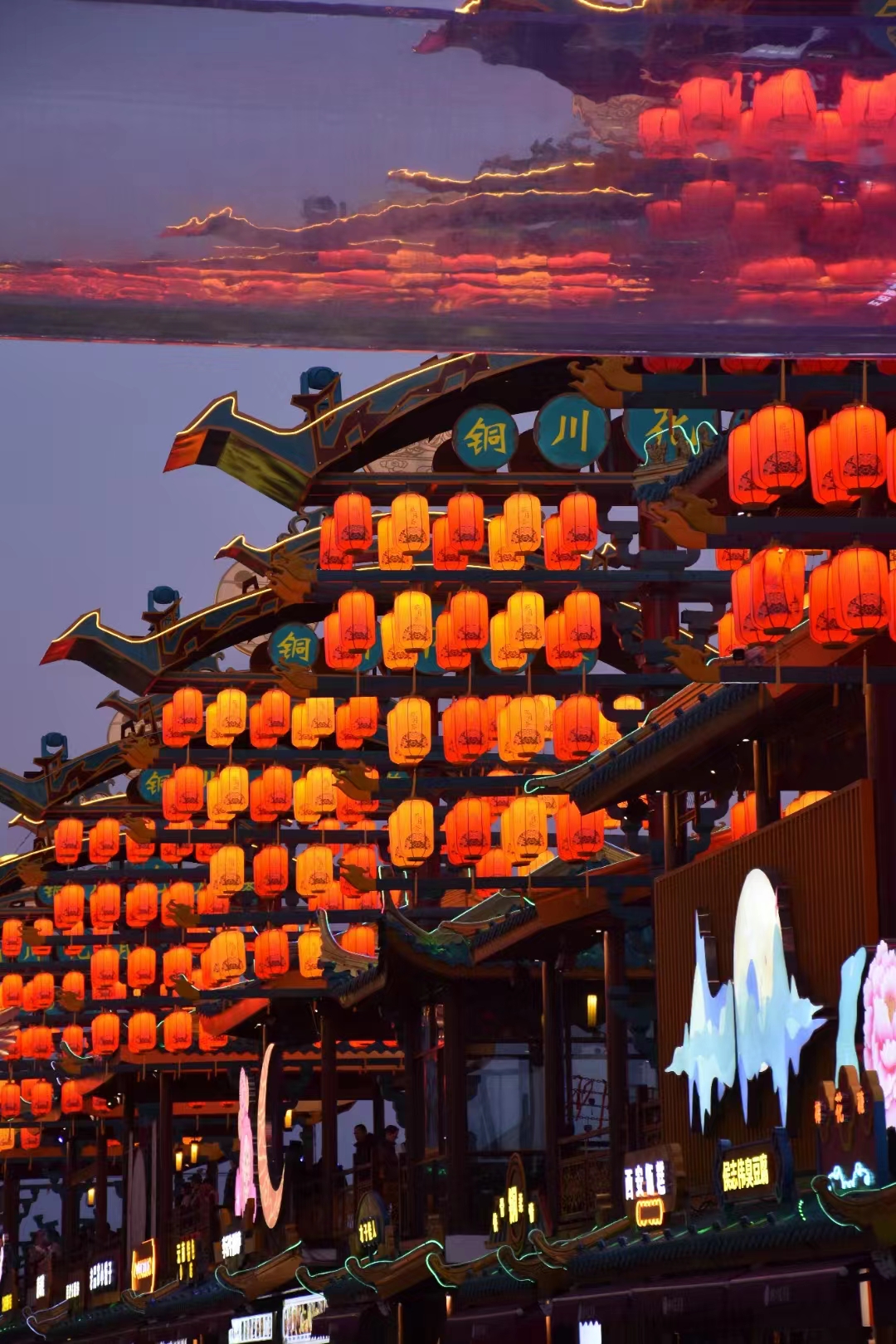
烟花,承载着趋邪避邪、保佑平安的寓意,被视为迎接新年的一种传统方式。
Fireworks, carrying the meaning of warding off evil and blessing peace, are regarded as a traditional way to welcome the New Year.
一、烟花升空,又是一年
Fireworks liftoff, another year
(一)烟花的起源
The origin of fireworks
烟花的起源可以追溯到中国唐朝时期。据传,烟花最初是由一位名叫李畹的宫女发明的。她在一次偶然的机会中,将火药与纸张混合在一起,制成了一种可以燃烧并发出声响的物品。这便是烟花的雏形。
The origin of fireworks dates back to the Tang Dynasty of China.It is said that fireworks were originally invented by a palace lady named Li Wan.By chance, she mixed gunpowder with paper to make an object that could burn and make a sound. This is the prototype of fireworks.
(二)烟花的历史
History of fireworks
在唐朝之后,烟花逐渐在民间流传开来,并成为庆祝节日的重要物品。宋代时期,烟花的制作技术得到了进一步的提升,出现了更多种类的烟花。明清时期,烟花的制作和燃放技术更是达到了巅峰,成为宫廷和民间欢庆节日的必备之物。
After the Tang Dynasty, fireworks gradually spread among the people and became an important item for celebrating festivals. In the Song Dynasty, the production technology of fireworks was further improved, and more kinds of fireworks appeared. In the Ming and Qing Dynasties, the production and setting off technology of fireworks reached its peak and became a necessary thing for the court and the people to celebrate festivals.
(三)为什么要放烟花
Why do we set off fireworks
放烟花作为一种庆祝方式,其背后蕴含着丰富的文化内涵和寓意。首先,烟花的绚丽多彩和震撼人心的声响,能够给人们带来欢乐和喜庆的氛围,让人们感受到节日的热烈和喜庆。其次,烟花的绽放象征着美好、繁荣和希望,寓意着人们对未来的美好憧憬和祝愿。此外,放烟花也是一种传统习俗的延续和传承。在现代社会,无论是国庆、新年还是其他重要节日,烟花的绽放都成为人们共同庆祝的标志,让人们在欢乐的氛围中感受到中国人的团结和凝聚力。
Fireworks as a way to celebrate, it contains rich cultural connotation and meaning behind. First of all, the colorful fireworks and shocking sound, can bring people joy and festive atmosphere, let people feel the warm and festive festival. Secondly, the blooming of fireworks symbolizes beauty, prosperity and hope, which means people's good hopes and wishes for the future. In addition, setting off fireworks is also a continuation and inheritance of traditional customs. In modern society, whether it is National Day, New Year or other important festivals, the bloom of fireworks has become a symbol of people's common celebration, so that people can feel the unity and cohesion of the Chinese people in a happy atmosphere.
二、中国醒狮,振奋精神
The Chinese lion, cheer up the spirit
(一)舞狮的起源
The origin of lion dance
舞狮,是中国优秀的民间艺术。舞狮有南北之分,南狮又称醒狮。舞狮最早起源于汉代,当时被作为一种宫廷娱乐形式。随着时间的推移,舞狮逐渐传入民间,并发展成为一种具有地方特色的民间艺术。
Lion dance is an excellent folk art in China. The lion dance is divided into north and south, and the south lion is also called the lion dance. Lion dance originated in the Han Dynasty, when it was used as a form of palace entertainment. With the passage of time, lion dance gradually spread into the folk, and developed into a folk art with local characteristics.
(二)为什么要舞狮
Why do you want to dance the lion
狮子外形威武、动作刚劲、神态多变。人们相信狮子是祥瑞之兽,舞狮能够带来好运,所以每逢春节或其他一些庆典活动,都会在阵阵锣鼓鞭炮声中,舞狮助庆祈求吉利。
The lion has a powerful appearance, vigorous movements and changeable expressions. People believe that lions are auspicious beasts, lion dance can bring good luck, so every Spring Festival or some other celebrations, in bursts of gongs and firecrackers, lion dance to help celebrate and pray for luck.
(三)舞狮的传承和发展
The inheritance and development of lion dance
随着社会的不断发展和进步,舞狮表演也在不断地传承和发展。一方面,一些传统的舞狮队伍和表演形式得到保护和传承,成为我国非物质文化遗产的重要组成部分;另一方面,一些新的舞狮表演形式和团队也不断涌现,为这一传统艺术形式注入新的活力。舞狮表演也逐渐走向国际舞台,成为中国文化交流和传播的重要载体之一。许多华人华侨将春节文化传播到国外,也让“老外”体验到了中国独有的情怀,舞狮更是得到了他们的青睐。
With the continuous development and progress of the society, the lion dance performance is also continuously inherited and developed. On the one hand, some traditional lion dance teams and performance forms have been protected and inherited, becoming an important part of China's intangible cultural heritage; On the other hand, some new lion dance performance forms and teams are also emerging, injecting new vitality into this traditional art form. The lion dance performance has gradually moved to the international stage, becoming one of the important carriers of Chinese cultural exchange and dissemination.
Many overseas Chinese will spread the Spring Festival culture abroad, but also let the"foreigners" experience the unique feelings of China, the lion dance is favored by them.
三、大头娃娃,憨态可掬
Big head doll, cute and adorable
(一)大头娃娃的起源
The origin of the big head doll
大头娃娃,俗称“大头和尚舞”。南宋时已有“上元佳节,装演大头和尚”的记载。关于大头娃娃,汉族民间有很多相关的传说:说大头娃娃可以驱鬼,戴上后,庄稼可以丰收,人民生活可以安康。
Big head doll, commonly known as"big head monk dance". In the Southern Song Dynasty, there is a record of"Shangyuan Festival, pretending to be a big head monk". About the big head doll, there are many related legends among the Han folk: it is said that the big head doll can drive away ghosts, and after wearing it, the crops can be harvested and the people can live healthily.
(二)大头娃娃的传承和发展
The inheritance and development of big-head dolls
大头娃娃,是一种具有悠久历史的民间艺术表演形式。古时,舞蹈形式一般为二人表演,一饰和尚,头戴笑和尚面具,手拿拂尘或蒲扇;一扮柳翠,头戴大头面具,手执扇子或手帕。和尚有掸尘、拜佛等动作,柳翠有搔面、搔耳等表演,以及两个嬉逗、追逐等即兴舞蹈。后来发展到大头娃娃舞,一般分两队,四至八人不等,戴大头娃面具,穿红绿绸衫、腰系绸带,行进时作扭秧歌队形,广场表演有相互穿插、逗趣、嬉笑等动作表演。
Big-head doll is a folk art performance form with a long history. In ancient times, the dance form was generally performed by two people, one dressed as a monk, wearing a smiling monk mask, and holding a dust or a leaf fan; Dressed as Liucui, wearing a big head mask, holding a fan or handkerchief. And there are dust, worship Buddha and other actions, Liu Cui has scratching face, scratching ears and other performances, as well as two fun, chase and other impromptu dance. Later developed to the big head doll dance, generally divided into two teams, four to eight people, wearing big head baby masks, wearing red and green silk shirts, waist ribbons, while marching Yangko formation, square performance has mutual interplay, fun, laughing and other action performances.
四、灯火长明,喜乐安宁
Bright lights, joy and peace
(一)灯会的起源
The origin of the lantern meeting
灯会,又称花灯节或元宵节,是中国传统的民间节日之一。起源可以追溯到汉代,据传因为当时习惯在夜间点燃灯笼、放烟火来祈求平安、驱邪,后来逐渐发展成为具有浓郁节日气氛的文化活动,并延续至今。
Deng hui, also known as Lantern Festival or Lantern Festival, is one of the traditional Chinese folk festivals. The origin can be traced back to the Han Dynasty, and it is said that because it was customary to light lanterns and set off fireworks at night to pray for peace and drive away evil spirits, it gradually developed into a cultural activity with a strong festive atmosphere and continues to this day.
(二)灯会的传承和发展
The inheritance and development of the Lantern Festival
在唐宋时期盛行,佛教经典中提到过“佛说灯会功德经”,并于每年农历正月十五日设斋放生,人们开始将灯会与宗教文化相结合,使之更加丰富多样。明清时期,灯会逐渐成为一项重要的社交活动,参加者通过赏花灯、猜灯谜等方式增加团结和娱乐,同时也成为商贾交易的场所。近现代,随着科技的发展和城市化进程的推进,灯会的形式愈加多样化和现代化,如电子灯光、光影秀、无人机表演等成为新时代的亮点。
In the Tang and Song dynasties, the Buddhist classics mentioned the"Buddha said the merits of the Lantern Festival", and on the 15th day of the first lunar month every year, people began to combine the Lantern Festival with religious culture to make it more diverse. During the Ming and Qing Dynasties, the lantern fair gradually became an important social event, with participants increasing unity and entertainment by watching lanterns and guessing lantern riddles, and also becoming a place for merchants to trade. In modern times, with the development of science and technology and the advancement of urbanization, the forms of lantern fairs have become more diversified and modern, such as electronic lighting, light and shadow shows, and drone performances have become the highlights of the new era.
(三)灯会的文化内涵
The cultural connotation of the Lantern Festival
灯会是中国传统文化的重要组成部分,其具有深厚的文化内涵和象征意义,主要包含以下几个方面:
(1)节日祥和:灯会通常是庆祝重要节日的一种庆典形式,如春节、元宵节、中秋节等。通过灯会庆典,人们表达对节日的祈福和向往,营造出浓郁的祥和氛围。
(2)吉祥如意:灯会中的灯饰图案,多数都是寓意吉祥如意,如吉祥物、花卉、动物、文字等,寄托着人们美好的心愿和期盼,祈求幸福安康。
(3)文化自信:灯会是中国传统文化的重要载体,其中蕴含着丰富的历史文化和民俗知识。通过灯会庆典,可以让人们更深入地了解和传承中国的文化遗产,同时也加强了中外文化交流和互动。
Lantern Festival is an important part of Chinese traditional culture, which has profound cultural connotation and symbolic significance, mainly including the following aspects:
(1) Festival peace: Lantern Festival is usually a celebration of important festivals, such as the Spring Festival, Lantern Festival, Mid-Autumn Festival and so on. Through the Lantern Festival, people express their blessings and yearning for the festival, creating a strong and peaceful atmosphere.
(2) Good luck: Most of the lighting patterns in the lantern meeting are auspicious, such as mascots, flowers, animals, words, etc., which carry people's good wishes and expectations, praying for happiness and well-being.
(3) Cultural confidence: Lantern Festival is an important carrier of Chinese traditional culture, which contains rich knowledge of history, culture and folk customs. Through the Lantern Festival, people can better understand and inherit China's cultural heritage, and also strengthen the cultural exchanges and interactions between China and foreign countries.

舞狮被认为是驱邪避害的吉祥瑞物,每逢元宵佳节或集会庆典,民间都以舞狮前来助兴。
Lion dance is considered to be an auspicious thing to drive away evil spirits and avoid harm. During the Lantern Festival or the assembly celebration, the people come to the lion dance to support the fun.

大头娃娃,也称抛大头或罗汉舞,是一种传统的民俗文化表演,也是人们寄托美好愿望的一种方式。
Big head doll, also known as tossing big head or Luo han dance, is a traditional folk culture performance and a way for people to express their good wishes.

灯会是由官方举办的大型灯饰展览活动,常附带有民俗活动,极具地方特色。寓意着祈求光明、平安团圆。
Lantern Fair is a large-scale lighting exhibition held by the official, often accompanied by folk activities, very local characteristics. It means to pray for light, peace and reunion.